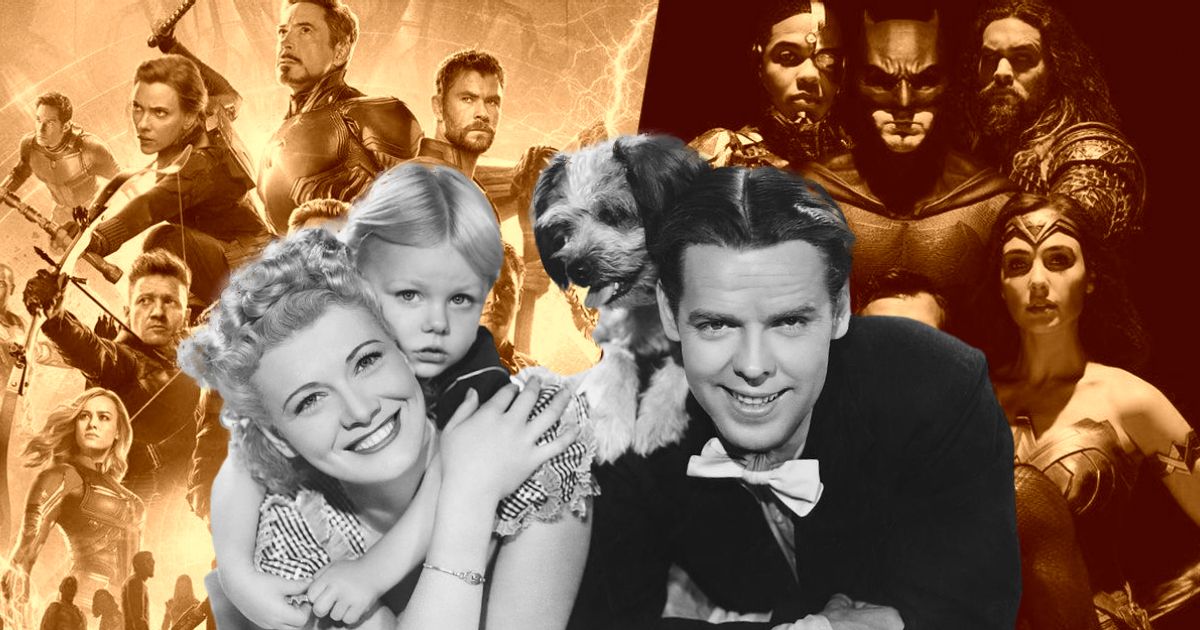Ever since their transition to the cinematic medium, both Marvel and DC Comics have made great headway in bringing superheroes to the big screen. The first of these two comic book companies satisfied moviegoers on May 2nd, 2008, with the release of Robert Downey Jr’s Iron Man. DC, on the other hand, soon followed some odd years later in 2013 with Henry Cavill’s Man of Steel. As much as these types of films are a pure delight for comic book fans all around the world, one of the biggest milestones that the MCU and DCU have achieved is the sheer number of movies that have come out of both camps since the rebirth of the genre.
While the DC Extended Universe (that is, pre-James Gunn-era) has fifteen complete films in its library, which include the various forms of Justice League, Suicide Squad, and the more recent and down-to-earth feature that introduced the Blue Beetle, the Marvel Cinematic Universe holds over thirty films since its inception which include the award-winning Avengers: Endgame and Tom Holland’s Spider-Man: No Way Home. Putting aside the fact that these incredibly entertaining movies are about fantastical names saving the world in some over-the-top way, you’d be surprised to know that there is actually another comic character adapted for the big screen out there that not only just about reaches the MCU’s film count as of right now but also surpasses the DCEU’s total number of movies by double.
Related: What Could Be Blue Beetle’s Role With the New DCU Characters?
A Comic Strip Come to Life
Enter Blondie. Created by illustrator Chic Young in September 1930 and becoming a massive overnight success in the United States, this comic strip followed an un-bothered and happy-go-lucky woman named Blondie Boopadoop and her equally enthusiastic boyfriend Dagwood Bumstead who works as an office manager at a construction firm.
After unsuccessfully switching Dagwood out with an auto mechanic, the iconic couple is reunited and marries in 1933 after much pleading from fans of the work. Not all is fortunate with Blondie and Dagwood, though, as the man’s parents disown him once they find out that he married below his social rank (quite a sign of the times, eh?). This ignorant and backward act by the elders ultimately made the couple more relatable to readers as the two were forced to move into the suburbs of Joplin, Missouri.
Through the popularity of the Sunday strip, Blondie ended up appearing in many other mediums, including comic books, books, games, cartoons, radio, television (the Blondie cartoons were produced by Marvel coincidentally enough), and most notably, film five years after the characters appeared in print.
Originally slated for only fourteen but brought back due to fan demand in 1945, twenty-eight movies were made to be exact, and not only were they sequential in terms of storytelling but also featured actor Arthur Lake and actress Penny Singleton in the same leading roles up until the end of the series. Talk about dedication.
Produced by none other than Columbia Pictures on a low-budget scale between the years of 1938 and 1950, some of the titles included Blondie Meets The Boss, Blondie for Victory and Blondie’s Big Moment. From interviews done with people who lived during the times that the movies were originally released, lines went around the block of the theater the night that these films came out.
Related: Fantastic Four Director Teases Start of Filming; Says Movie is “Unlike Anything at Marvel”
A Great Example of Cinematic Continuity
Besides the constant misadventures that the husband and wife would end up in (such as fixing up an old hotel that was caught up in a scandal or going through basic training together), an endearing part in the earlier entries was found in the daring dynamic between Baby Dumpling (played by Larry Simms) and Daisy, the family’s small dog. Just as mentioned before, both characters mature over time, which adds to the audience’s investment in these characters.
Since Blondie’s creator conveyed to Columbia the importance of continuity, the intro of every movie was a collision between Dagwood and the mail carrier (just like in the strip), as well as his fascination with comically big sandwiches. Also, Simms stayed on for all twenty-eight films, so viewers saw him grow up from a little child to a teenager (at that point, though, he is just called Alexander). While Daisy doesn’t really get any bigger since he is a cocker spaniel-poodle terrier mix, he does have “babies” to show time progression.
For today’s audience, the Blondie franchise may feel like stepping foot into a time machine. Between the old and emboldened American dream motif, the black and white visuals that came with the cinema of yesteryear, and silly subplots that sometimes revolve around milkmen or dance halls that all don’t hold a place in modern society, some may very well consider these line of movies to be severely outdated and no longer relevant.
But with James Gunn’s new DCU yet to come to fruition, Kevin Feige’s MCU hanging by a thread, Mattel’s Toy-verse about to burst onto the scene, and Nintendo going full steam ahead on a connected video game adaptations, maybe it’s time we look into the past for answers regarding long term cinematic success.
With Columbia Pictures making over twenty-five movies from the Blondie comic strip, superhero films can learn a thing or two about longevity. Read More

